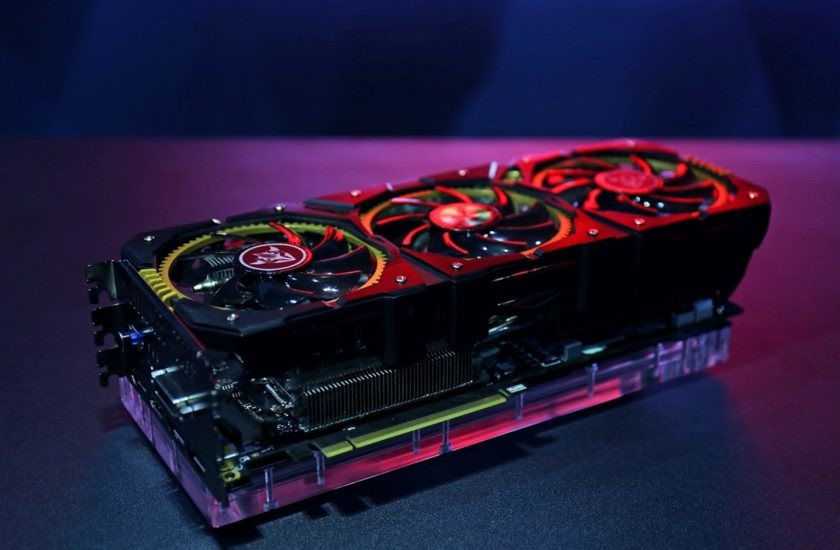In today’s world, a high-performance graphics card is no longer just a luxury for tech enthusiasts—it’s a necessity for gamers, digital artists, video editors, and professionals in creative industries. Whether you’re building a gaming rig or a workstation for graphic-intensive tasks, selecting the right graphics card can make or break your experience. With countless models available on the market, making the right choice can feel overwhelming. But don’t worry! In this guide, we’ll break down everything you need to know to choose the perfect graphics card for your needs.
What is a Graphics Card?
At its core, a graphics card (also known as a GPU or Graphics Processing Unit) is a hardware component responsible for rendering images and videos to your display. It transforms the data sent by your CPU into visual information that can be viewed on your monitor. For gamers, the performance of the graphics card directly affects how smoothly games run and how good they look. For creative professionals, the GPU plays a significant role in speeding up tasks like video rendering, 3D modeling, and graphic design.
Why Do You Need a Dedicated Graphics Card?
Many computers come with integrated graphics, which are sufficient for basic tasks like browsing the web or watching videos. However, integrated graphics aren’t powerful enough for demanding applications like high-end gaming or professional video editing. That’s where dedicated graphics cards come into play. They have their own dedicated memory (VRAM), more processing power, and advanced cooling systems, all of which make them far more suitable for graphics-heavy tasks.
Key Factors to Consider When Choosing a Graphics Card
Before you head out to buy a graphics card, you need to understand a few critical factors that will influence your decision. Let’s break down the most important ones:
Performance Needs
The first thing you need to ask yourself is: what will you be using your graphics card for? If you’re a gamer, the type of games you play will dictate your needs. Modern AAA titles like “Cyberpunk 2077” or “Call of Duty” demand high-end GPUs like the Nvidia RTX 4070 or the AMD RX 6800. If you only play less-demanding games or older titles, a mid-range option like the Nvidia GTX 1660 or AMD Radeon RX 570 will suffice. For creative professionals, tasks like video editing, 3D modeling, or rendering require more VRAM and parallel processing power, so higher-end cards will be necessary.
VRAM (Video Memory)
Just as your system’s RAM affects its ability to multitask, a graphics card’s VRAM affects how much graphical information it can handle at once. For gaming, 4GB to 8GB of VRAM is generally considered adequate for most modern games. However, if you’re working with 4K resolution or running multiple high-resolution monitors, you’ll want at least 8GB or more of VRAM.
Ray Tracing and DLSS
If you’re into cutting-edge graphics, then ray tracing is a feature you should consider. It simulates how light interacts with objects in a scene, producing more realistic visuals. Nvidia’s RTX series is well-known for its ray tracing capabilities. Additionally, DLSS (Deep Learning Super Sampling) uses AI to upscale lower resolutions, improving frame rates without sacrificing visual quality. This technology is particularly beneficial for gamers.
Cooling Solutions
Graphics cards generate a lot of heat, especially when running intensive tasks. Most GPUs come with built-in cooling systems, but not all are created equal. If you plan to overclock your GPU or run it under heavy loads, make sure to invest in a card with a good cooling solution. Some cards even offer liquid cooling for enthusiasts looking for the best thermal performance.
Compatibility
Make sure the graphics card you choose is compatible with your existing system. This includes checking the size of your case (will the GPU fit?), power supply (does it provide enough wattage?), and available PCIe slots on your motherboard. Also, ensure that your system’s CPU is not bottlenecking your GPU performance—there’s no point in investing in a top-tier GPU if your CPU can’t keep up!
Top Graphics Card Recommendations for 2024
If you’re unsure where to start, here are some of the best graphics cards available in 2024:
- Nvidia GeForce RTX 4090: The best choice for gamers and professionals who want the ultimate performance. It offers unparalleled ray tracing and DLSS 3.0.
- AMD Radeon RX 7900 XT: A powerful alternative for those looking for top-tier performance without breaking the bank.
- Nvidia RTX 4060: Ideal for gamers on a budget who still want access to ray tracing and DLSS.
- AMD Radeon RX 6600 XT: A solid choice for 1080p gaming and light creative work.
How to Future-Proof Your Graphics Card Purchase
Technology evolves rapidly, and today’s top-tier GPU could be outdated in just a few years. To future-proof your purchase, consider opting for a card that offers the latest features like ray tracing, DLSS, and plenty of VRAM. This ensures your card can handle upcoming game releases and creative software advancements without needing an upgrade anytime soon.
Conclusion
Choosing the right graphics card is an investment that can significantly enhance your gaming or creative experience. By understanding your performance needs, checking compatibility, and staying informed on the latest features, you can make an informed decision that will keep your system running smoothly for years to come. Whether you’re upgrading your current setup or building a new PC from scratch, picking the perfect GPU is a step you can’t afford to overlook.
